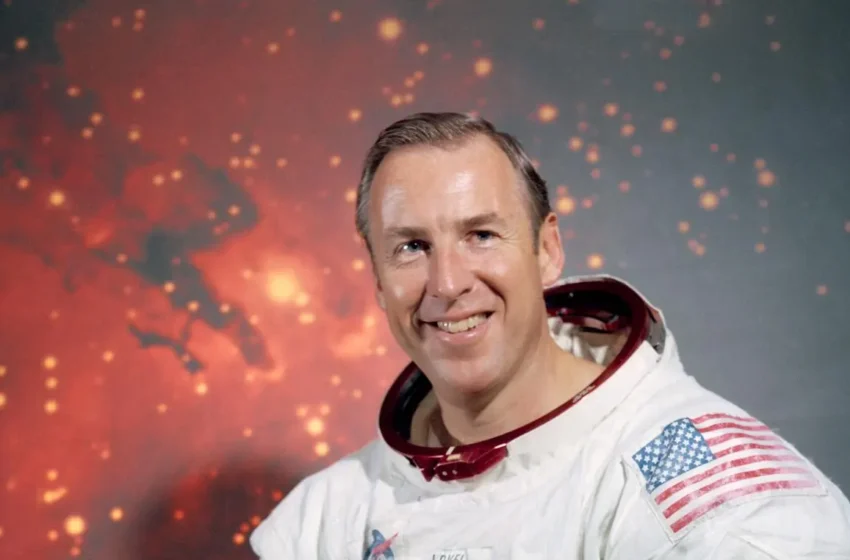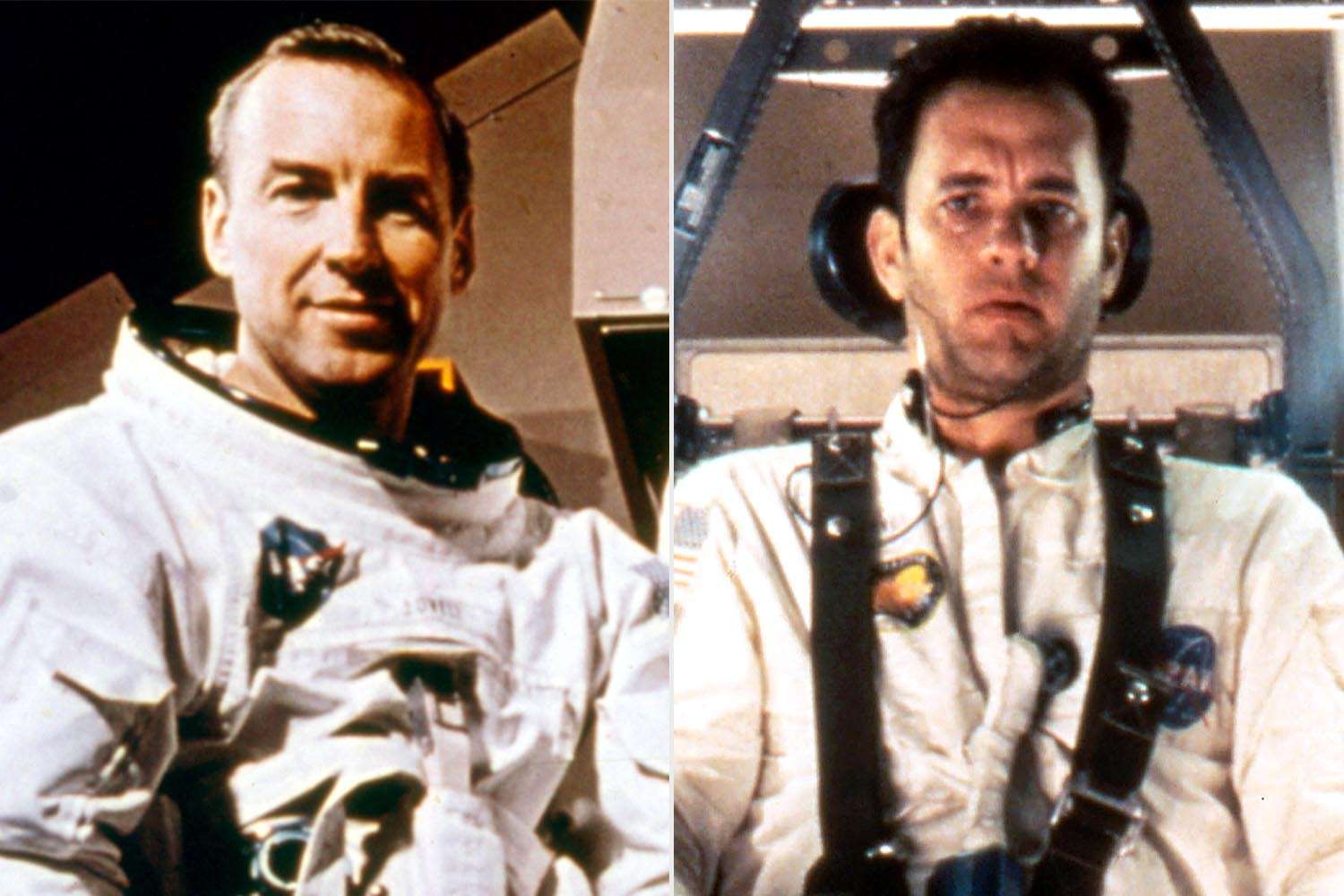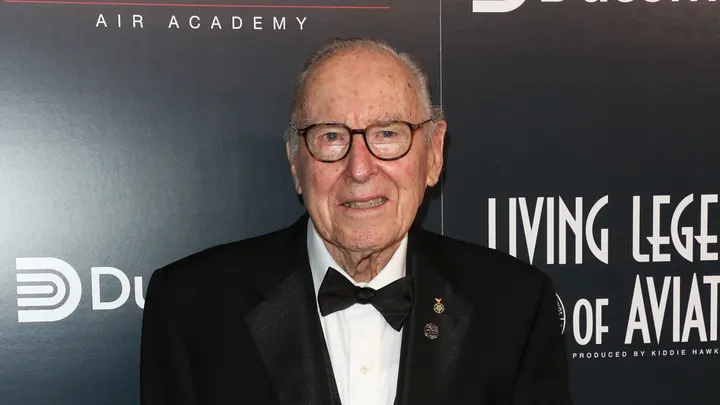Who was Jim Lovell? A look at Apollo 13 commander whose steady leadership turned disaster into triumph

Apollo 13 commander Jim Lovell, whose calm leadership turned NASA’s greatest space crisis into a story of survival, has died at 97.
Captain James A. “Jim” Lovell Jr., the decorated Navy pilot, NASA astronaut, and Apollo 13 mission commander whose calm resolve under unimaginable pressure helped save his crew during one of the most harrowing moments in spaceflight history, has died at the age of 97.
Lovell passed away Thursday at his home in Lake Forest, Illinois, surrounded by family. His death was confirmed in a statement from loved ones, who remembered him not just as a pioneer of space exploration, but as the heart of their family.
“We are enormously proud of his amazing life and career accomplishments, highlighted by his legendary leadership in pioneering human space flight,” the statement read. “To us, he was Dad, Granddad, and our hero. We will miss his unshakeable optimism, his humor, and the way he made us believe we could do the impossible.”
From Navy Pilot to Astronaut
Born March 25, 1928, in Cleveland, Ohio, Lovell’s fascination with flight began as a boy building model airplanes. He attended the U.S. Naval Academy, graduating in 1952, and went on to become a test pilot and Navy aviator. His skill in the cockpit and reputation for precision earned him a spot in NASA’s second group of astronauts, selected in 1962.
Early Spaceflights
Lovell’s first mission came in December 1965 as pilot of Gemini 7, a two-week endurance flight that tested human tolerance for long-duration space travel. He later commanded Gemini 12 in 1966, a mission that perfected NASA’s techniques for spacewalking — an essential skill for lunar exploration.
In December 1968, as command module pilot of Apollo 8, Lovell joined Frank Borman and Bill Anders in becoming the first humans to orbit the Moon. The mission, broadcast live to millions on Christmas Eve, gave the world its first glimpse of Earth rising above the lunar horizon — an image that became an icon of the space age.
“Houston, We’ve Had a Problem”
Lovell’s defining moment came on April 13, 1970, during Apollo 13, his fourth and final spaceflight. Two days into the mission, an oxygen tank exploded, crippling the spacecraft and dashing hopes of a Moon landing. Lovell, along with crewmates Jack Swigert and Fred Haise, faced dwindling oxygen, freezing temperatures, and limited power.
His measured voice during the crisis — immortalized in the phrase “Houston, we’ve had a problem” — belied the urgency of the situation. Working closely with NASA engineers on the ground, Lovell led his crew through improvised maneuvers and life-support fixes, guiding them safely back to Earth after four tense days.
Though the mission failed to reach the Moon, it became a case study in problem-solving and human resilience. Lovell’s leadership earned him international acclaim and the Presidential Medal of Freedom.
Life After NASA
Retiring from the Navy and NASA in 1973, Lovell transitioned into business, holding executive roles in telecommunications and banking. He also devoted time to education and public speaking, sharing lessons on teamwork, preparation, and perseverance.
In 1994, he co-authored Lost Moon with journalist Jeffrey Kluger, a detailed account of Apollo 13 later adapted into Ron Howard’s 1995 Academy Award-winning film Apollo 13, in which Tom Hanks portrayed him. Lovell even made a cameo in the movie’s final scene.
Personal Life and Legacy
Lovell married his high school sweetheart, Marilyn Gerlach, in 1952. The couple had four children and remained together for more than seven decades. Friends and family recall his warmth, humility, and gift for storytelling — whether recounting spaceflight or fishing trips on Lake Michigan.
In addition to his NASA accolades, Lovell’s honors include two Navy Distinguished Service Medals, the Congressional Space Medal of Honor, and induction into the U.S. Astronaut Hall of Fame.
NASA Acting Director Sean Duffy called Lovell “a model of courage and competence,” adding, “His character and steadfast leadership turned a potential tragedy into a triumph that inspired the world. His work helped shape the path to future Moon missions and beyond.”
An Enduring Symbol
From the cockpit of fighter jets to the far side of the Moon, Jim Lovell’s career spanned the most daring chapters of human exploration. His legacy is not only written in the history of spaceflight but in the mindset he championed: that calm thinking, teamwork, and determination can turn the impossible into reality.
As the United States prepares for new lunar voyages under NASA’s Artemis program, Lovell’s example remains a guiding star — a reminder that sometimes, the greatest victories come from missions that do not go as planned.



